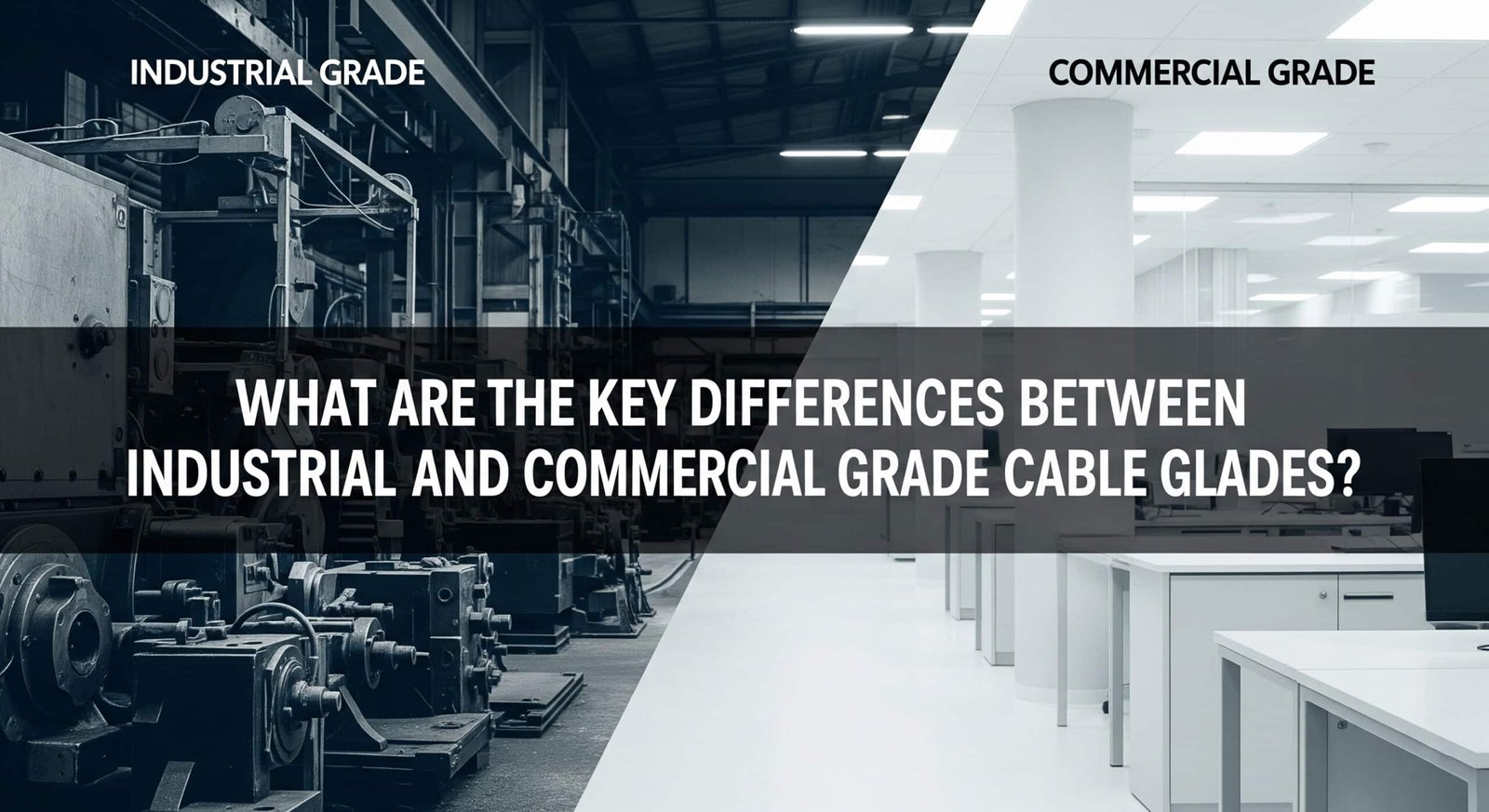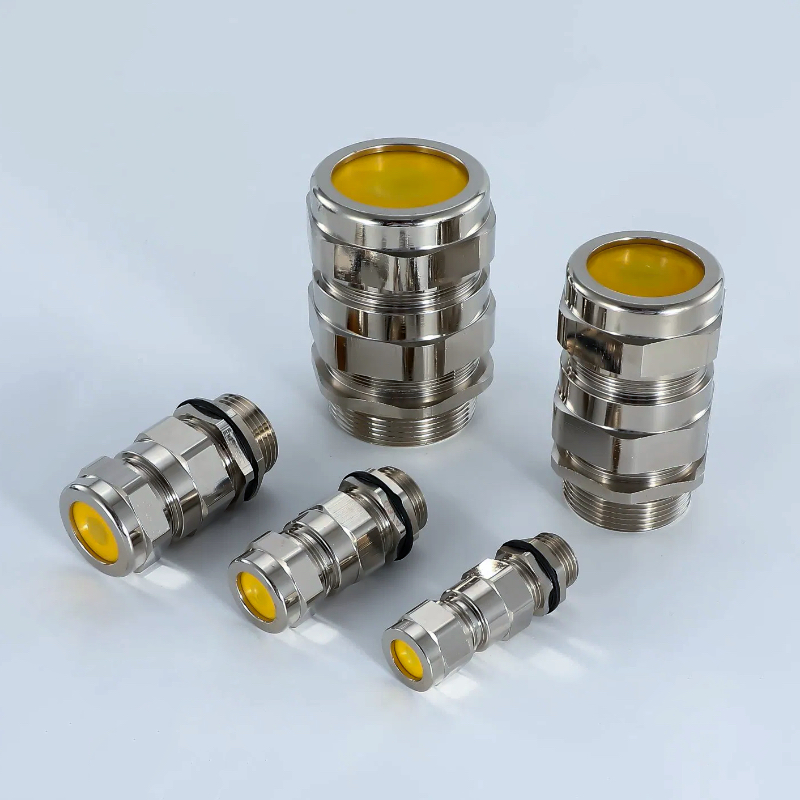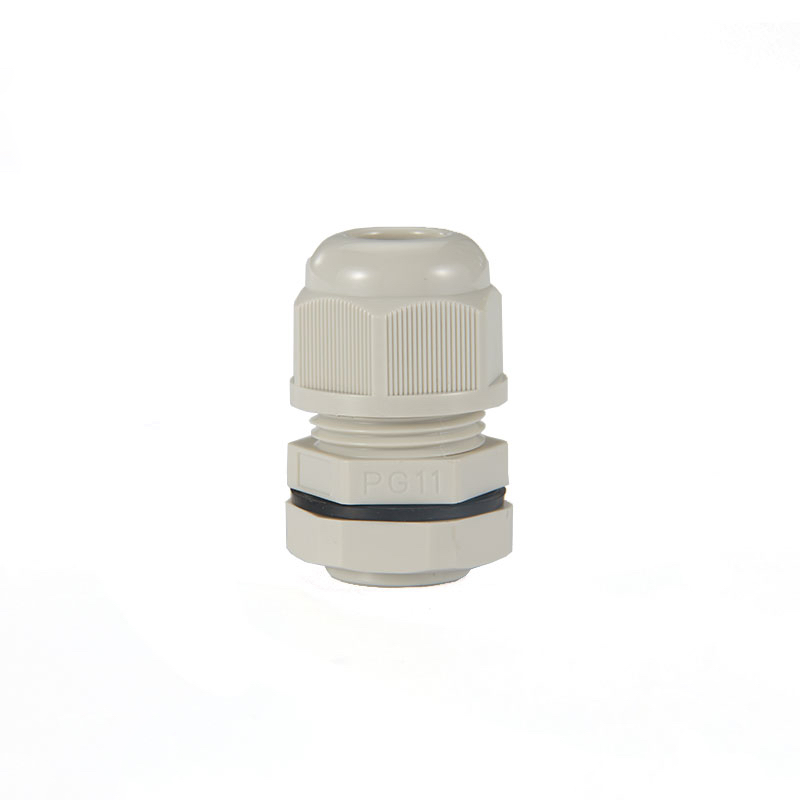Choosing the wrong grade of cable glands can lead to catastrophic failures, safety hazards, regulatory violations, and costly downtime that could shut down entire operations, damage expensive equipment, and expose companies to liability risks, making the selection between industrial and commercial grade cable glands one of the most critical decisions in electrical system design and installation.
Industrial grade cable glands are engineered for harsh environments with superior materials, enhanced sealing, explosion-proof certifications1, and temperature resistance up to 200°C, while commercial grade cable glands are designed for standard office and light industrial applications with basic environmental protection, standard materials, and temperature ratings typically limited to 80°C, making proper grade selection essential for safety, performance, and regulatory compliance.
Having specified cable glands for everything from offshore oil platforms in the North Sea to data centers in Silicon Valley, I’ve seen firsthand how grade selection impacts system reliability, safety, and long-term costs. Let me share the critical differences that will help you make the right choice for your specific application.
Table of Contents
- What Defines Industrial vs Commercial Grade Cable Glands?
- How Do Environmental Requirements Differ Between Grades?
- What Are the Material and Construction Differences?
- Which Certifications and Standards Apply to Each Grade?
- How Do You Choose the Right Grade for Your Application?
- FAQs About Industrial vs Commercial Cable Glands
What Defines Industrial vs Commercial Grade Cable Glands?
Industrial grade cable glands are defined by their ability to withstand extreme environmental conditions, hazardous atmospheres, mechanical stress, and temperature extremes while maintaining reliable sealing and electrical performance, whereas commercial grade cable glands are designed for controlled indoor environments with moderate environmental exposure, standard temperature ranges, and basic protection requirements for office buildings, retail spaces, and light commercial applications.
Understanding these fundamental differences is crucial for proper application selection and system reliability.
Industrial Grade Characteristics
Extreme Environment Capability: Designed to operate reliably in temperatures from -40°C to +200°C, with exposure to chemicals, oils, UV radiation, and severe weather conditions.
Enhanced Sealing Systems: Multiple sealing stages with premium elastomers that maintain integrity under pressure differentials, temperature cycling, and chemical exposure.
Robust Construction: Heavy-duty materials including marine-grade stainless steel, high-performance polymers, and corrosion-resistant platings for long-term durability.
Hazardous Area Compliance: ATEX2, IECEx, and UL certifications for explosive atmospheres, flammable gases, and combustible dust environments.
Commercial Grade Characteristics
Standard Environment Design: Optimized for indoor applications with controlled temperature (0°C to +80°C) and minimal chemical exposure or mechanical stress.
Basic Environmental Protection: Standard IP ratings3 (IP54-IP65) providing adequate protection against dust and moisture in typical commercial settings.
Cost-Effective Materials: Standard brass, aluminum, or engineered plastics selected for performance and economy in non-critical applications.
General Purpose Certifications: UL listing, CE marking, and basic safety standards compliance for commercial electrical installations.
Application Scope Comparison
Industrial Applications: Oil refineries, chemical plants, offshore platforms, mining operations, heavy manufacturing, power generation, and marine installations.
Commercial Applications: Office buildings, retail stores, hospitals, schools, data centers, and light manufacturing facilities with controlled environments.
Performance Expectations
Industrial Grade Reliability: Designed for 20+ year service life with minimal maintenance in harsh conditions and critical applications where failure is not acceptable.
Commercial Grade Reliability: Engineered for 10-15 year service life in standard environments with reasonable maintenance access and non-critical applications.
Cost Considerations
| Grade Type | Initial Cost | Lifecycle Cost | Typical Applications | ROI Factors |
|---|---|---|---|---|
| Industrial | 2-5x higher | Lower due to longevity | Critical systems | High reliability value |
| Commercial | Standard baseline | Higher replacement costs | Standard installations | Cost optimization focus |
David, a procurement manager at a large automotive plant in Detroit, Michigan, initially tried to save costs by using commercial grade cable glands in their paint booth ventilation system. Within six months, the glands failed due to solvent exposure, causing a production shutdown that cost $50,000 in lost production. We replaced them with industrial grade chemical-resistant glands that have operated flawlessly for over three years, proving that proper grade selection saves money long-term. 😊
How Do Environmental Requirements Differ Between Grades?
Environmental requirements differ significantly between grades, with industrial cable glands requiring resistance to extreme temperatures (-40°C to +200°C), aggressive chemicals, high pressure differentials, UV radiation, salt spray, and mechanical vibration, while commercial grade glands need only standard indoor protection against dust, moisture, and moderate temperature variations (0°C to +80°C) typical of office and retail environments.
These environmental differences directly impact material selection, sealing design, and certification requirements.
Temperature Performance Requirements
Industrial Grade Temperature Range: Must operate reliably from -40°C to +200°C with some specialized versions rated to +300°C for extreme applications.
Thermal Cycling Resistance: Withstand thousands of temperature cycles without seal degradation or mechanical failure in applications like furnace controls and outdoor installations.
Commercial Grade Temperature Range: Typically rated for 0°C to +80°C, adequate for HVAC-controlled environments and standard electrical equipment heat generation.
Thermal Stability: Designed for stable temperature conditions with minimal cycling, suitable for indoor installations with climate control.
Chemical Resistance Specifications
Industrial Chemical Exposure: Must resist acids, bases, solvents, oils, hydraulic fluids, and specialized process chemicals without degradation or seal failure.
Material Compatibility: Specialized elastomers like Viton, EPDM, and PTFE selected for specific chemical environments and long-term exposure resistance.
Commercial Chemical Exposure: Basic resistance to cleaning agents, mild solvents, and occasional chemical contact typical in commercial buildings.
Standard Materials: NBR and standard rubber compounds adequate for limited chemical exposure in controlled environments.
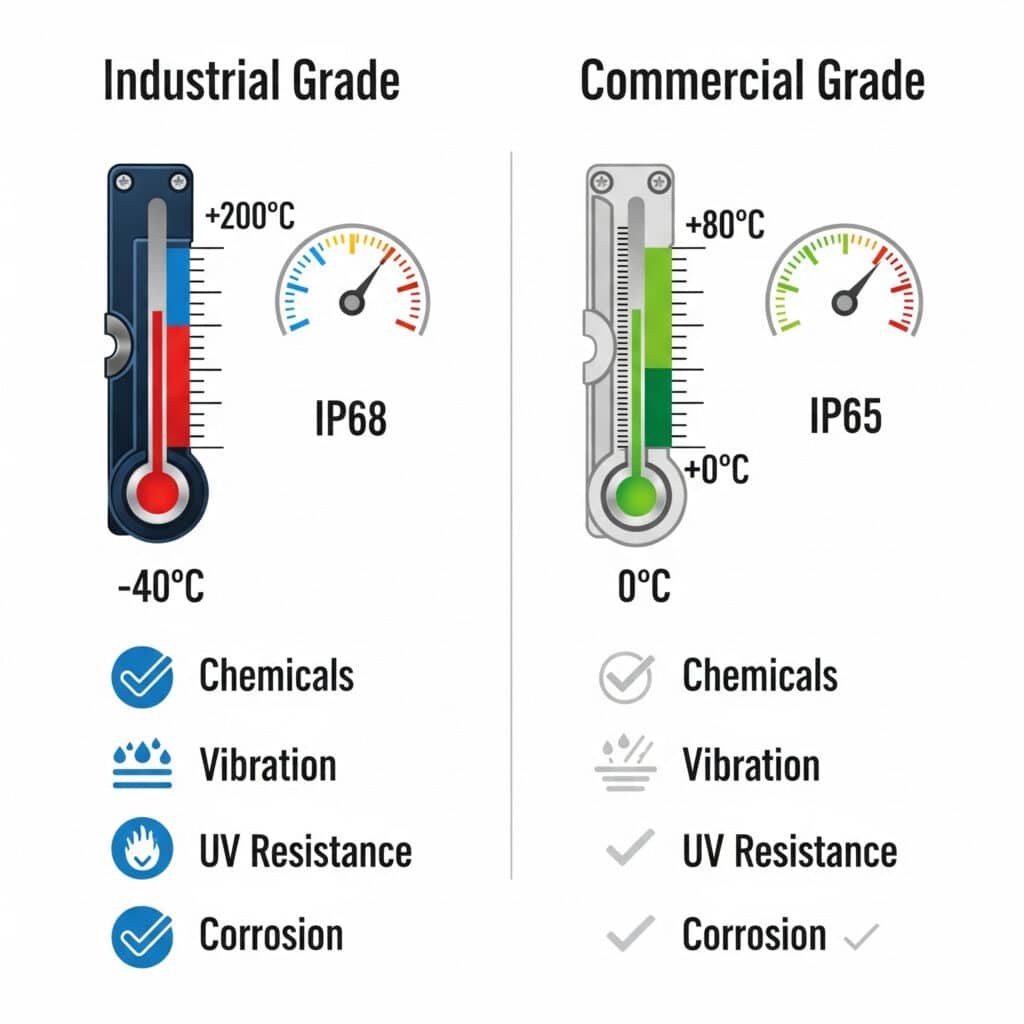
Mechanical Stress Requirements
Industrial Vibration Resistance: Designed to withstand continuous vibration from heavy machinery, compressors, and industrial equipment without loosening or failure.
Impact Resistance: Enhanced mechanical strength to resist impacts from maintenance activities, material handling, and harsh industrial environments.
Commercial Mechanical Requirements: Standard mechanical strength adequate for typical installation and maintenance activities in office environments.
Vibration Considerations: Minimal vibration exposure from HVAC systems and standard building equipment.
Environmental Sealing Performance
Industrial IP Ratings: Typically IP66, IP67, or IP68 with verified performance under pressure testing and long-term exposure conditions.
Pressure Differential Capability: Maintain sealing integrity under significant pressure differentials from process equipment and environmental conditions.
Commercial IP Ratings: Usually IP54 to IP65, providing adequate protection for standard indoor electrical installations.
Standard Pressure Conditions: Designed for atmospheric pressure variations typical in commercial buildings.
UV and Weather Resistance
Industrial UV Protection: UV-stabilized materials and coatings for outdoor installations and high-intensity industrial lighting exposure.
Weather Resistance: Designed for direct weather exposure including rain, snow, ice, and extreme temperature variations.
Commercial UV Requirements: Limited UV exposure in indoor environments with standard fluorescent and LED lighting.
Weather Protection: Typically installed in weather-protected environments with minimal outdoor exposure.
Corrosion Resistance Standards
Industrial Corrosion Protection: Marine-grade materials, specialized coatings, and cathodic protection compatibility for harsh corrosive environments.
Salt Spray Testing: Compliance with ASTM B117 salt spray testing4 for coastal and marine applications.
Commercial Corrosion Requirements: Standard corrosion resistance adequate for typical indoor humidity and air quality conditions.
Basic Protection: Standard plating and surface treatments sufficient for controlled commercial environments.
What Are the Material and Construction Differences?
Material and construction differences between industrial and commercial grade cable glands include industrial versions using premium stainless steel, high-performance polymers, and specialized elastomers with precision machining and multiple sealing stages, while commercial grade glands utilize standard brass, aluminum, and engineered plastics with simplified construction and single-stage sealing systems optimized for cost-effectiveness in standard applications.
These material choices directly impact performance, durability, and application suitability.
Metal Component Materials
Industrial Grade Metals: Marine-grade 316L stainless steel, Hastelloy, Inconel, and specialized alloys selected for specific chemical and temperature resistance requirements.
Corrosion Protection: Advanced surface treatments including electroless nickel plating, PVD coatings, and specialized passivation processes.
Commercial Grade Metals: Standard brass (CW617N), aluminum alloy, and basic stainless steel (304) adequate for controlled indoor environments.
Standard Finishes: Nickel plating, zinc plating, and basic anodizing sufficient for commercial applications.
Polymer and Plastic Components
Industrial Polymer Selection: High-performance materials including PEEK, PPS, modified nylon with glass fiber reinforcement, and UV-stabilized compounds.
Temperature Stability: Polymers selected for continuous operation at elevated temperatures without degradation or dimensional changes.
Commercial Polymer Materials: Standard nylon (PA66), polypropylene, and ABS plastics optimized for cost and adequate performance in standard conditions.
Basic Requirements: Materials selected for standard temperature ranges and minimal chemical exposure.
Elastomer and Sealing Materials
Industrial Elastomers: Specialized compounds including Viton (FKM), EPDM, silicone, and PTFE selected for specific chemical compatibility and temperature ranges.
Performance Testing: Elastomers tested for compression set, chemical resistance, and long-term aging under actual operating conditions.
Commercial Elastomers: Standard NBR (nitrile), EPDM, and basic silicone compounds adequate for general-purpose sealing applications.
Cost Optimization: Materials selected for balance of performance and cost in standard commercial environments.
Manufacturing and Quality Control
Industrial Manufacturing Standards: Precision CNC machining, controlled atmosphere welding, and stringent quality control with 100% testing of critical dimensions.
Traceability Requirements: Complete material traceability and documentation for critical applications and regulatory compliance.
Commercial Manufacturing: Standard machining processes, automated assembly, and statistical quality control adequate for commercial applications.
Efficiency Focus: Manufacturing optimized for cost-effectiveness while maintaining adequate quality standards.
Assembly and Construction Methods
Industrial Assembly: Multiple sealing stages, redundant protection systems, and precision assembly with controlled torque specifications.
Reliability Engineering: Design for 20+ year service life with minimal maintenance requirements in harsh environments.
Commercial Assembly: Simplified construction with single-stage sealing and standard assembly methods for cost-effective production.
Standard Reliability: Designed for 10-15 year service life with reasonable maintenance access and replacement intervals.
Testing and Validation
Industrial Testing Protocols: Extensive environmental testing including temperature cycling, chemical immersion, pressure testing, and accelerated aging.
Certification Requirements: Third-party testing and certification for hazardous area compliance and international standards.
Commercial Testing Standards: Basic performance testing for IP ratings, temperature limits, and standard electrical safety requirements.
Compliance Verification: Standard certification processes for general commercial and industrial applications.
Which Certifications and Standards Apply to Each Grade?
Industrial grade cable glands require extensive certifications including ATEX for explosive atmospheres, IECEx for international hazardous areas, UL for North American markets, marine certifications like DNV-GL, and specialized standards for nuclear, aerospace, and critical infrastructure applications, while commercial grade glands typically need only basic UL listing, CE marking, and standard electrical safety certifications for general building and light industrial use.
Understanding certification requirements is essential for regulatory compliance and proper application selection.
Industrial Grade Certifications
ATEX Certification: European directive compliance for equipment in explosive atmospheres, covering gas groups and temperature classes with rigorous testing and documentation.
IECEx Certification: International certification scheme for explosive atmosphere equipment, providing global acceptance and harmonized standards.
UL Hazardous Location Listing: North American certification for Class I, II, and III hazardous locations with specific marking and installation requirements.
Marine Certifications: DNV-GL, ABS, Lloyd’s Register, and other maritime classification society approvals for shipboard and offshore applications.
Specialized Industrial Standards
Nuclear Qualification: IEEE 323, IEEE 344, and 10CFR50 Appendix B5 requirements for nuclear power plant applications with seismic and radiation resistance.
Aerospace Standards: AS9100 quality systems and specific aerospace material and testing requirements for aviation applications.
Railway Standards: EN 45545 fire protection, EN 50155 electronic equipment, and other rail-specific certifications for transportation applications.
Oil & Gas Standards: API, NORSOK, and other petroleum industry standards for upstream, midstream, and downstream applications.
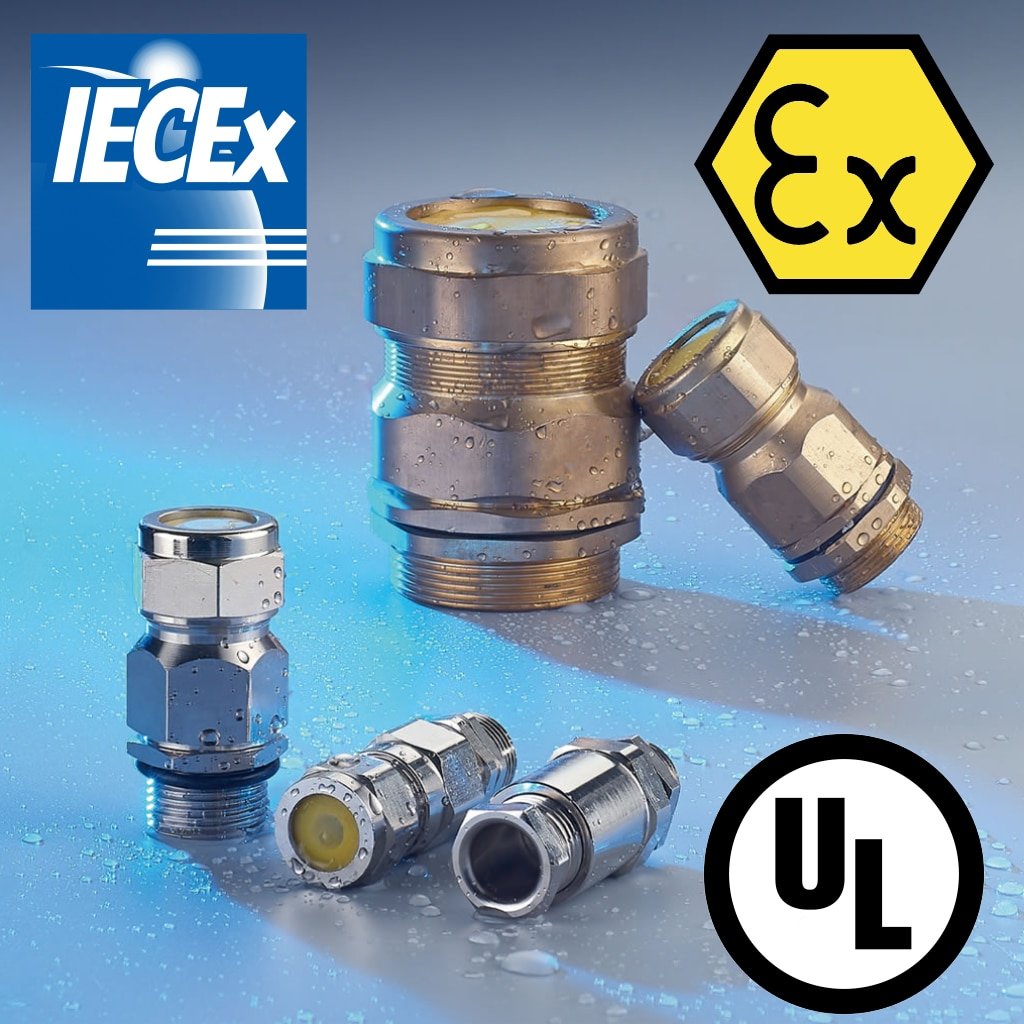
Commercial Grade Certifications
UL General Listing: Standard UL listing for general-purpose electrical equipment in commercial and light industrial applications.
CE Marking: European conformity marking indicating compliance with applicable EU directives for the intended market.
CSA Certification: Canadian Standards Association approval for Canadian market compliance and North American recognition.
Basic Safety Standards: Compliance with fundamental electrical safety requirements for commercial building applications.
Regional and International Standards
European Standards: EN standards for electrical equipment, environmental protection, and safety requirements in European markets.
Asian Standards: JIS (Japan), KS (Korea), GB (China), and other regional standards for local market compliance and acceptance.
International Standards: IEC standards providing global harmonization and technical specifications for electrical equipment.
National Standards: Country-specific requirements and certifications for local regulatory compliance.
Testing and Compliance Requirements
Industrial Testing Protocols: Extensive type testing, production testing, and ongoing surveillance by notified bodies and certification agencies.
Documentation Requirements: Detailed technical files, risk assessments, and quality management system documentation for industrial certifications.
Commercial Testing Standards: Standard electrical safety testing, basic environmental testing, and simplified certification processes.
Compliance Verification: Periodic factory inspections and product testing to maintain certification validity.
Certification Cost and Timeline
| Certification Type | Typical Cost Range | Timeline | Renewal Requirements | Market Access |
|---|---|---|---|---|
| ATEX | $50,000-$200,000 | 12-18 months | Annual surveillance | European Union |
| UL Hazloc | $30,000-$100,000 | 8-12 months | Annual follow-up | North America |
| IECEx | $40,000-$150,000 | 10-16 months | 5-year renewal | Global acceptance |
| UL General | $5,000-$25,000 | 3-6 months | Annual follow-up | North America |
| CE Marking | $10,000-$50,000 | 4-8 months | Self-declaration | European Union |
Hassan, who operates a petrochemical complex in Abu Dhabi, UAE, needed cable glands for a new alkylation unit expansion. The harsh desert environment combined with explosive hydrocarbon vapors required both ATEX Zone 1 certification and extreme temperature resistance. We provided industrial grade stainless steel cable glands with full ATEX certification and 150°C temperature rating that met all UAE regulatory requirements and have performed flawlessly in their demanding application for over two years.
How Do You Choose the Right Grade for Your Application?
Choosing the right grade requires systematic evaluation of environmental conditions, safety requirements, regulatory compliance needs, lifecycle cost considerations, and performance expectations, with industrial grade selection justified by harsh environments, hazardous area classifications, critical applications, and long-term reliability requirements, while commercial grade selection is appropriate for controlled environments, standard applications, cost-sensitive projects, and non-critical systems where basic protection is adequate.
A structured approach ensures optimal selection for both performance and cost-effectiveness.
Environmental Assessment Criteria
Temperature Analysis: Evaluate maximum and minimum operating temperatures, thermal cycling frequency, and duration of extreme temperature exposure.
Chemical Exposure Evaluation: Identify all chemicals, solvents, oils, and cleaning agents that may contact the cable glands during normal operation and maintenance.
Moisture and Dust Conditions: Assess IP rating requirements based on dust levels, moisture exposure, washdown requirements, and environmental sealing needs.
Mechanical Stress Factors: Consider vibration levels, impact potential, installation accessibility, and maintenance requirements.
Safety and Regulatory Requirements
Hazardous Area Classification: Determine if the installation area is classified as hazardous due to flammable gases, vapors, or combustible dusts.
Safety System Criticality: Evaluate whether cable gland failure could impact safety systems, emergency shutdown procedures, or personnel safety.
Regulatory Compliance: Identify applicable codes, standards, and certification requirements for the specific industry and location.
Insurance and Liability: Consider insurance requirements and liability implications of equipment selection and potential failures.
Application-Specific Selection Guidelines
Heavy Industrial Applications: Oil refineries, chemical plants, steel mills, mining operations, and offshore platforms require industrial grade with appropriate hazardous area certifications.
Light Industrial Applications: Food processing, pharmaceutical manufacturing, and automotive assembly may require industrial grade for specific areas with commercial grade adequate for support areas.
Commercial Building Applications: Office buildings, retail stores, hospitals, and schools typically use commercial grade with industrial grade only for specialized equipment areas.
Data Center Applications: Server rooms and telecommunications facilities usually require commercial grade with enhanced environmental protection for critical systems.
Lifecycle Cost Analysis
Initial Investment: Compare upfront costs including procurement, certification documentation, and any special installation requirements.
Operating Costs: Evaluate maintenance requirements, inspection frequencies, and operational reliability impacts on system availability.
Replacement Costs: Consider service life expectations, replacement part availability, and future upgrade requirements.
Failure Consequences: Assess potential costs of system downtime, safety incidents, and regulatory violations from inadequate grade selection.
Performance Specification Development
Environmental Specifications: Define temperature ranges, chemical exposure, IP ratings, and mechanical requirements based on actual operating conditions.
Electrical Requirements: Specify conductor sizes, cable types, grounding requirements, and any special electrical performance needs.
Mechanical Specifications: Define thread sizes, mounting requirements, strain relief needs, and accessibility requirements.
Certification Requirements: List all applicable standards, certifications, and documentation requirements for the specific application.
Decision Matrix Framework
| Selection Factor | Industrial Grade | Commercial Grade | Weight Factor | Decision Impact |
|---|---|---|---|---|
| Environmental Severity | High temperature, chemicals | Standard indoor conditions | High | Critical for reliability |
| Safety Criticality | Life safety, process safety | General electrical safety | High | Regulatory compliance |
| Regulatory Requirements | Hazardous area certifications | Basic electrical codes | High | Legal compliance |
| Lifecycle Cost | Higher initial, lower total | Lower initial, higher total | Medium | Budget considerations |
| Maintenance Access | Difficult, infrequent | Easy, regular | Medium | Operational planning |
Implementation Considerations
Procurement Strategy: Develop specifications that clearly define grade requirements and acceptable alternatives for cost optimization.
Installation Planning: Consider special installation requirements, tools, and training needed for different grade selections.
Maintenance Programs: Establish appropriate inspection and maintenance schedules based on grade selection and environmental conditions.
Documentation Requirements: Maintain proper documentation for certifications, installation records, and maintenance history.
Conclusion
The choice between industrial and commercial grade cable glands significantly impacts system reliability, safety, and long-term costs. Industrial grade provides superior performance in harsh environments and critical applications, while commercial grade offers cost-effective solutions for standard applications.
Success requires matching the grade to actual application requirements rather than defaulting to either the lowest cost or highest specification option. At Bepto, we provide both industrial and commercial grade cable glands with comprehensive technical support to help customers make informed decisions that optimize both performance and value for their specific applications.
FAQs About Industrial vs Commercial Cable Glands
Q: Can I use commercial grade cable glands in industrial applications to save money?
A: Commercial grade glands should only be used in industrial settings if environmental conditions are controlled and non-hazardous. Using commercial grade in harsh industrial environments risks premature failure, safety hazards, and higher total lifecycle costs due to frequent replacements.
Q: What’s the typical price difference between industrial and commercial grade cable glands?
A: Industrial grade cable glands typically cost 2-5 times more than commercial grade initially, but often provide better value over 20+ year lifecycles due to superior durability, reduced maintenance, and lower failure rates in demanding applications.
Q: How do I know if my application requires industrial grade cable glands?
A: You need industrial grade if your application involves temperatures below 0°C or above 80°C, chemical exposure, hazardous area classifications, outdoor installation, high vibration, or critical safety systems where failure could cause injury or significant downtime.
Q: Are there hybrid options between industrial and commercial grades?
A: Some manufacturers offer “heavy-duty commercial” or “light industrial” grades that bridge the gap with enhanced materials and higher temperature ratings while maintaining cost-effectiveness for moderately demanding applications.
Q: What certifications should I look for when buying industrial grade cable glands?
A: Look for ATEX or IECEx for explosive atmospheres, UL listing for North American hazardous locations, appropriate IP ratings for environmental protection, and industry-specific certifications like marine (DNV-GL) or nuclear qualifications depending on your application.
-
Learn more about the rigorous testing and standards required for equipment to be certified as explosion-proof. ↩
-
Explore the ATEX directives for equipment used in potentially explosive atmospheres in the European Union. ↩
-
Understand how IP ratings classify the level of protection against dust and water intrusion. ↩
-
Discover the details of the standardized ASTM B117 test method for evaluating corrosion resistance. ↩
-
Read the official quality assurance criteria for nuclear power plants and fuel reprocessing plants. ↩

